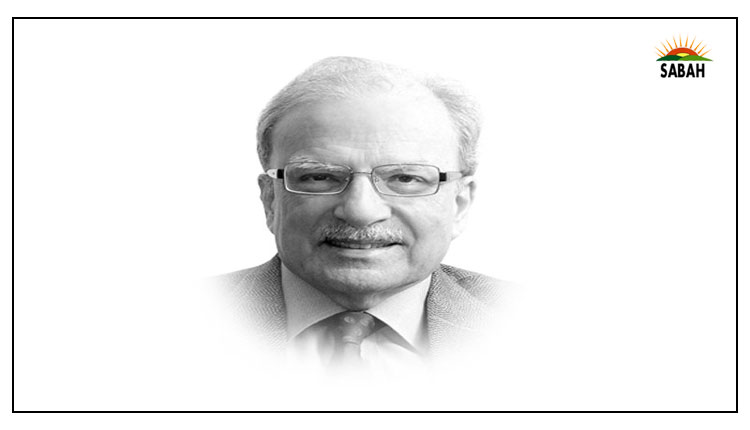China’s approach to dealing with Covid pandemic…. Shahid Javed Burki
Having opted for different systems of governance meant that Beijing and Washington would adopt different approaches to deal with the Covid pandemic. Several experts from different fields commented on the differences in the way policymakers in both countries handled the pandemic. China, being an authoritarian state, went for strictly enforced rules; the US, giving greater space to individual behaviour, left protections to be followed to people, with the government essentially limiting its role to supplying information and providing advice. States were left to adopt their own policies. Data available suggests that there were more Covid-related deaths in the US than in China. Megan K Stack, a contributing writer of The New YorkTimes, offered her assessment in an article published by the newspaper on December 11, 2022 under the title ‘A contagion both China and America fear’. She knows the world, having reported from several different places around the globe for both The Los Angeles Times and The New YorkTimes. Her book, Every Man in Village is a Liar, was a finalist for the 2010 National Book Award.
In her article she referred to a statement by Rochelle Wilensky before she became director of the Centers for Disease Control. The incoming director of an agency that had taken the lead in managing the US response to the Covid pandemic spoke of the effectiveness of China’s strict policies but once in her position and as she got to know more about the Chinese approach, she recoiled at some of the measures Beijing had adopted. There were critics on the other side as well. “The price of freedom in the U.S.: 1 million Covid deaths, 107,622 Fentanyl deaths in 2021 alone,” Chinese government spokeswoman Hua Chunying tweeted in late November 2022. “The American people deserve something far better than that. What we want is to protect our people’s lives and ensure them a better life.”
In the fall of 2020, state-run media featured prominently a report in which Chinese think-tanks named the US “the world’s No. 1 failure in the fight against Covid, referring to a cold U.S. government for playing with Covid and allowing people to die, describing political manipulation that ignores the basic human rights of the American people” and calling it a “huge humanitarian disaster”.
Xi Jinping, after winning another term for the multiple offices he holds, said, “The fight against the novel coronavirus pandemic has achieved major strategic results, fully demonstrating the significant advantages of the leadership of my county’s socialist system.” Xi claimed he had adopted a superior policy to protect the citizenry by attempting to stamp out every infection, imposing massive lockdowns on whole blocks and cities, forcing the sick into collective quarantines and demanding constant nucleic or of PCR testing for access to such public places as supermarkets or parks. The rigid enforcement under the Supreme Leader Xi reflected on his style of maximalist power and control. But Xi realised that he might have overstepped his bounds. He reversed his approach towards the disease. As The Washington Post editorialised, “A major force behind his shift was the deepening harm to China’s economy from lockdowns that paralyzed manufacturing, infuriated workers, and drained local coffers. The recent unrest in Foxconn plant assembling Apple iPhones was a telling sign of troubles to come. Another factor was the widespread surge of public protest of draconian restrictions that took place at the end of November. We can only speculate how seriously China’s leaders took these protests — they normally do not tolerate outspoken criticism at any time — but their change of course is telling. It might also reflect the influence of the technocratic contingent among China’s leaders, or simply a raw political survival instinct. Either way, the implacable leadership, which rarely admits error, did indeed flex.”
However, several developments ended the celebratory mood that prevailed when the incidence of the pandemic fell sharply. Covid-19 caused suffering but so did the measures adopted to deal with it. Sparking the protests was the death of ten people in the western city of Urumqi when they were locked into a building that caught fire. People took to the streets in several cities throughout the country and students left their classes to join the protests. This, along with China’s economic woes, motivated Xi to abandon his quixotic race for ‘zero Covid’ and opened the country for people to resume some aspects of normal life. China also began to focus on increasing the number of people vaccinated. Megan Stack concludes her article by comparing the reactions of the two people — the Americans and the Chinese — to the management of the pandemic by their governments. “Chinese people got fed up with endless isolation and demanded, at considerable risk, greater civil liberties. Some Americans, meanwhile, lamented — despite emerging evidence of the extreme harm done to children’s education and mental health by the closures — their own leaders’ failure to impose controls.”
Responding to the agitation against the government’s strict approach towards the control of Covid, the Xi government reversed its position. It dramatically loosened its strict ‘zero Covid’ policies. On December 7, heath authorities published a 10-point plan to relax Covid controls. According to Christian Shepherd and Vic Chiang writing for The Washington Post, “Few expected the government to move so fast in the opposite direction. After more than two years of strict and ubiquitous Covid control, many Chinese report feeling left to fend for themselves. To combat public unease, official propaganda has reversed course. After months of underscoring the severity of coronavirus infections to justify increasing unpopular lockdown, Chinese healthcare experts started to sooth public fears of getting sick.”
Many of China’s 1.4 billion people remained vulnerable to the virus because of limited exposure, low vaccination rates and poor investment in emergency care. On December 16, the Institute of Health and Evaluation (IHME), a global research institute at the University of Washington in Seattle, projected that China’s Covid-19 death toll would spike to more than 332,000 by April 2023. China could see more than a million deaths in 2023 up from an official toll in 2022 of just 5,235.
The virus and its variants were already spreading in China before the government relaxed its policies. Researchers in Hong Kong predicted that 684 people per million would die if China reopened without a mass vaccination campaign and other measures. Just 40 per cent of Chinese older than 80 have received a booster shot. Airifinity, a London-based health analysis firm, projected in late November between 1.3 million and 2.1 million deaths in China if the government abruptly ended its ‘zero Covid’ policy.
A week after the reversal of the policy, the Chinese government estimated that as many 37 million people could have been affected in a single day. Funeral homes and crematories were struggling, as were hospitals that saw large parts of their staff fell ill. Experts called for the government to import virus-controlling medicines as well as more effective vaccines than those China was making. The government seemed to have heard the suggestions. In mid-December 2022, Pfizer signed an agreement with the state-owned China Meheco Group Co to import and distribute Paxlovid in the country.












